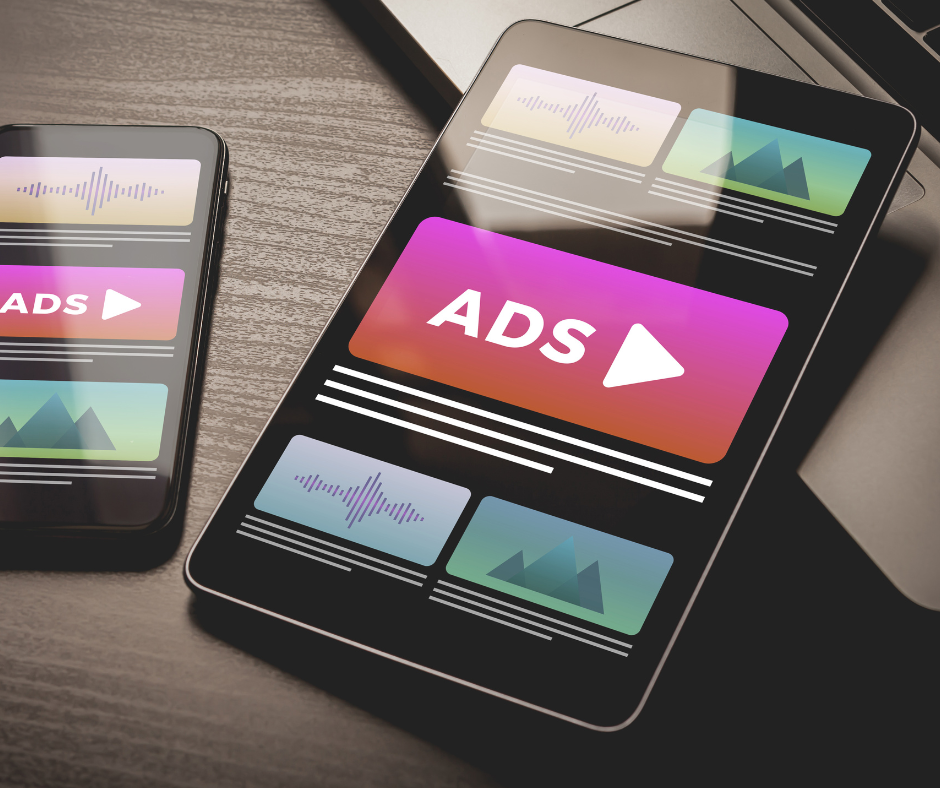Getting the Word Out: How Banner Ads Place Themselves Perfectly

You’ve worked for weeks to organize a fundraising event for a local charity hosted by your business. Or perhaps a huge sale is coming up in your shop. Maybe business has been dwindling or you’re looking to hire new talent. Clearly, there is a need to get the word out, but how?
Our modern environment has nearly limitless ways to advertise, but some are more effective than others. It’s essential to weigh the pros and cons of each before allocating funds. One avenue that thousands of businesses utilize is digital advertising. It has exploded in the past few years and for good reason. The average time spent on digital devices is continually increasing. In 2022, U.S. adults spent an average of 8 hours and 28 minutes daily on digital devices! With this many people spending time online, your potential audience is huge.
https://www.insiderintelligence.com/content/us-adults-spending-more-time-with-media
Banner ads, aka the little rectangular ads you see at the edges of websites, are a very popular form of digital advertising. They can have a huge reach and lead people directly to any website of your choosing when clicked on. Sharing your ads with a large pool of people is good, but without reaching people who are interested, your budget could just be flowing down the drain. Luckily, banner ads have a few strategies to prevent this.
1 – LOCAL DIGITAL ADVERTISING
Local digital advertising is incredibly helpful if you have services that best apply to local people. This skill uses geofencing, geotargeting, and household addressable targeting. These very effective approaches are similar but have some key differences. Geofencing is a location-based targeting that places ads in front of people within certain boundaries. Think of it as a fence laid out in the area you want people to see your ad. People within that fence will receive the banner ad when using the web. Geotargeting works very similarly to geofencing but instead uses markers such as state, city, zip code, or radius. This is great for larger areas or regions where you want people to view your ads. Household addressable targeting reaches people with exceptional precision. This will serve ads in neighborhoods and households that your ads would apply best to.
2 – DEMOGRAPHIC TARGETING
Once you determine what zip codes you want your ad to run in, you then can choose what demographics you want to look at your ads. This could be factors such as age, sex, race, parental status, and some others. These are effective at reaching your specific target audience. This might come in handy if you are looking to hire young new employees or want to advertise a women’s clothing sale.
3 – BEHAVIOR TARGETING
As the name implies, this form of targeting automatically analyzes the digital habits of consumers. If your ad is targeting people who want to use your broadband internet services and someone searches phrases such as “I need faster internet”, “why is my internet so slow”, or “best internet providers” Google is more likely to place your ads in front of them. It identifies the keywords in their searches or the websites they are spending time on that indicate they may be on the search for a new internet provider. With all these tools at their disposal, digital banner ads can ensure that they are going to people who are more likely to have an interest in your business. Each form of advertising has its own strengths, banner ads’ is placing your ad in the right places to get the most bang for your buck.



